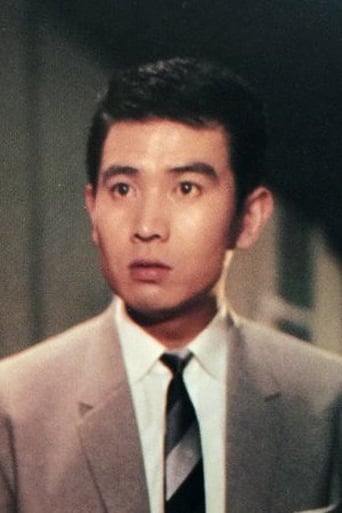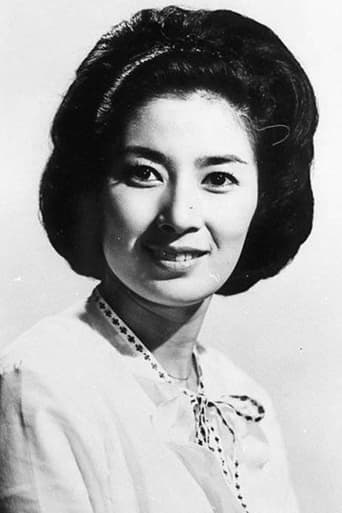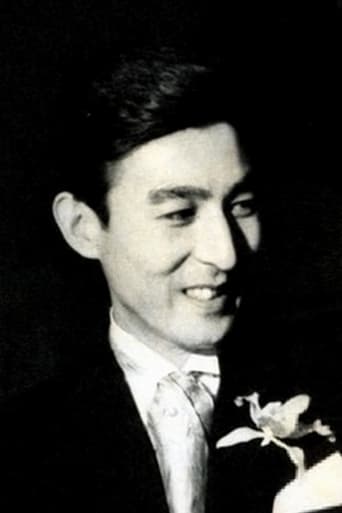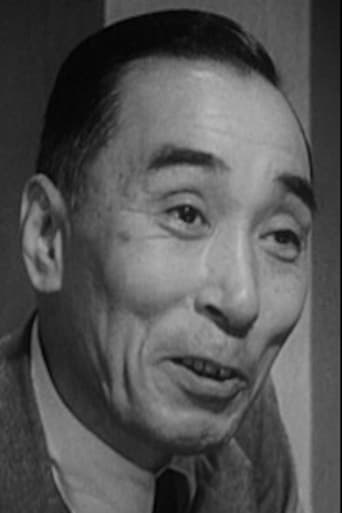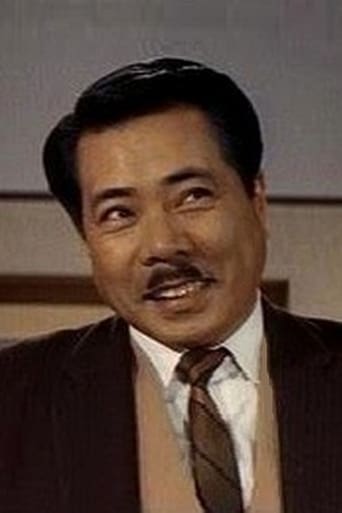SoftInloveRox
Horrible, fascist and poorly acted
Lumsdal
Good , But It Is Overrated By Some
Senteur
As somebody who had not heard any of this before, it became a curious phenomenon to sit and watch a film and slowly have the realities begin to click into place.
Plustown
A lot of perfectly good film show their cards early, establish a unique premise and let the audience explore a topic at a leisurely pace, without much in terms of surprise. this film is not one of those films.
JLRVancouver
The third of Toho's 'kaiju' films (and first in colour), "Rodan" finds Japan besieged by two immense prehistoric flying monsters. The film opens with a series inexplicable (and bloody) deaths at a flooded mine, later shown to be due to an immense, predatory insectoid that is identified as a larval Meganulon, a gigantic, fictional primeval dragonfly. One of the miners, trapped in the caves by an earthquake, witnesses the hatching of an enormous egg, from which a bird-like creature emerges and begins to eat the Meganulon. Not long after (the time scale in the film seems inconsistent if the hatchling was the adult Rodan), a Japanese fighter pilot reports a mysterious object flying at supersonic speeds, which suddenly turns and destroys the pursuing plane. People and cattle begin to disappear near Mt Aso, an active volcano and evidence points to a giant pteranodon-like creature, who is promptly christened 'Rodan'. To make matters worse, a second Rodan appears in the vicinity of the mountain (a well done scene). Determining that the colossal creatures may be nesting near the volcano, the military mount a massive missile and tank offensive, triggering a climatic volcanic eruption which leads to the film's surprisingly poignant ending. For a 60 year-old suit-mation kaiju epic, the film has aged remarkably well: the Rodan costume is quite good (much better than those used in later Showa-era kaiju films) and the miniatures used in the destruction of Fukuoka are excellent. The cables suspending the flying monster were occasionally visible (apparently they have been removed in some of the Blu-ray releases) but that (IMO) doesn't detract from the effectiveness of the scenes. The music by Akira Ifukube is good (although not as good as his work in Godzilla or Mothra). I watched a sub-titled version (I am unsure of the date of the subtitles, the language was more 'adult than I remember and the term 'global warming' was used) but the acting and 'subtitled' script was fine for a genre picture. Like the original "Godzilla" (1954), "Rodan" is a straight-out monster/horror film (albeit a little more affecting than Godzilla) and is an excellent example of the suit-mation kaiju genre pioneered by Toho in the 1950s. Rodan reappears (as a co-star or cameo) in nine more Godzilla outings (as of this writing), making the giant flying saurian one of the more active members of Toho's kaiju stables (but the Meganulon appeared to remained 'dormant' until 2000, when they reappeared in the excellent "Godzilla vs. Megaguirus", although with a different backstory).
LeonLouisRicci
Count this in TOHO's Top Three Japanese Monster/Fantasy/Sci-Fi Movies Along with the Original Godzilla (1954) and The Mysterians (1957)). If You are Not a Sucker for these Things and want a Sampler, it's those Three and You can Rest Easy.Because these "Men in Rubber Suits" Movies have a Loyal Following (like Ed Wood) that Love them to Pieces. While they do have some Charm, Once the Films became Self Parody (almost immediately) and Ultra-Silly it is Really Tough for a Non-Cultists to Join the Giddy Geek Cult that Follow this Stuff.Rodan was the First In Color and is an Entertaining Bit of Hokum that Benefits from the Perfectly Straight Attitude, some Disturbing and Scary Scenes, and an enormous amount of Pathos. The Ending is extremely Sad.Worth a Watch for Non-Fanatics and is a Good Example of the Genre before it went Bonkers. The SFX are Impressive and the Movie is Fast Paced and Well Done. For the Kids there is an Abundance of Flying Machines, Explosions, and Mayhem. Never Boring.
capkronos
For its U.S. release, this early daikaijū (made just a few years after the original GODZILLA and the first Japanese monster movie filmed in color) had a silly narrated prologue and stock footage of atomic blasts added to the beginning, was shortened by over ten minutes, had a new music score added and was, of course, dubbed into English. Some of the familiar voices you'll hear in this version are Keye Luke, Paul Frees and a young George Takei of "Star Trek" fame. In addition, a special effects company worked on removing numerous wires that were clearly visible during many of the fx shots (though some still remain even in the 'cleaned up' version). The title of the monster itself was changed from "Radon" (a contraction of pteRAnoDON; a large flying reptile of the late Cretaceous period) to "Rodan;" possibly so there'd be no confusion between it and the atomic element of the same name.At the Osaki mines in the small town of Kitamatsu, workers are exploring unsafe depths no man has explored before in their search for coal. After part of the underground tunnel floods, a worker is found dead. And then three search party members looking for another missing man are found horribly mutilated themselves. This is followed by a massive earthquakes and landslides, as the mining company have seriously screwed up the land stability in the area. Well actually, they've managed to open up some underground world where monsters has safely resided ever since the prehistoric age. The first thing to come out of the rubble are a bunch of large caterpillar-looking bugs with pinchers and claws, which also cause a massive cave-in that only our hero - safety engineer Shigeru Kawamura (Kenji Sahara) - survives, albeit with a bad case of amnesia. But the big bugs are only the beginning...Soon after the uproar in Kitamatsu, aircraft all over the globe are being destroyed mid-air and entire villages are leveled by something too fast to make out with the naked eye. That thing is Rodan, a giant flying lizard who hatched from an egg after the cave-in and can reach supersonic speeds. Technically, "Rodan" isn't the name for the monster per se, but the (fictional) name for this particular species of the pteranodon that's much larger, much more powerful and much MUCH faster. And there are actually TWO of them in this movie: the male and its female mate. The Rodan couple's rampage includes killing a honeymooning couple at a volcano, making numerous fighter jets blow up, knocking over a huge bridge and using their wings to cause tornado- like winds that blow over cars, trees, telephone poles, buses, trains and even entire large buildings. The military is called in with their tanks and missiles for the surprisingly solemn (and actually kind of sad) ending.Modern audiences may laugh at the special effects (just as audiences 50 years from now will likely laugh at and mock the special effects from the 2014 GODZILLA) but, for the time this was made, the fx are actually top notch. The creatures are well-designed and have some personality to them and the miniature models are quite well done, too. Eiji Tsuburaya and Akira Watanabe's work compares favorably to most other 50s sci- fi flicks. Though the action is slow to get started, you're compensated with destruction and explosions galore at the finale; highlighted by the destruction of the entire city of Sasebo. As is customary with Japanese monster movies of the 50s and 60s, this was designed as a cautionary parable, both to the dangers of messing with the environment and to the horrors of war. The latter is made evident during the closing bit of narration, which pointedly references the atomic bombings of Hiroshima and Nagasaki.Rodan never got another solo starring vehicle after this one, but did make appearances (usually as a good monster and an ally of Godzilla) in some other earlier kaiju flicks like GHIDRAH, THE THREE-HEADED MONSTER (1964), MONSTER ZERO (1965) and DESTROY ALL MONSTERS (1968). In 1993, the monster was brought back for GODZILLA VS. MECHAGOZILLA II and later factored into GODZILLA: FINAL WARS (2004).
AaronCapenBanner
Ishiro Honda directed this film, which starts off in a small Japanese mining community beset by mysterious killings and disappearances that turn out to be caused by giant insects who are later found to be sealed up in a cavern with Rodan, a giant flying prehistoric bird/lizard that escapes, then attacks Japan(still recovering from Godzilla!) It proves difficult to kill, and as it turns out, isn't alone, and has an egg it's guarding to boot... First film appearance of Rodan(and it's only solo film) has an imaginative opening sequence with the mine subplot, though picks up when Rodan finally appears, even though it's just an airborne version of Godzilla. The surviving Rodan would make return appearances in the Godzilla series, starting with "Ghidorah, The Three-Headed Monster".



